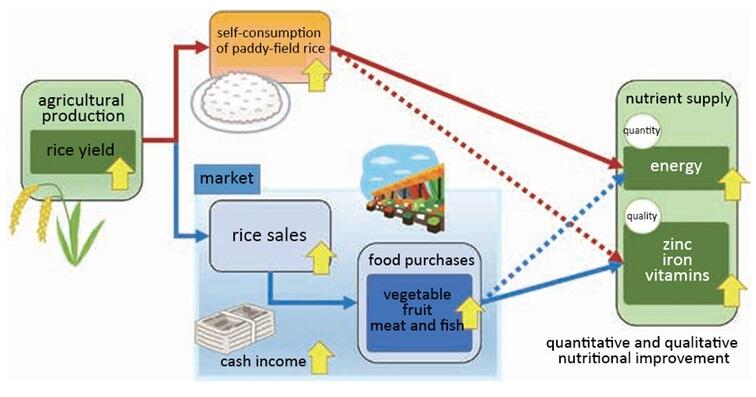Crop productivity is extremely low in sub‐Saharan Africa (south of the Sahara Desert), and people suffer from serious nutritional deficiencies. Madagascar, a rice‐producing country where per‐capita rice consumption is more than double that of Japan, faces a serious problem of low nutrition, with one in two people suffering from malnutrition; poor farming families and unstable rice production have been suggested as causes of malnutrition.
The research group, led by Project Leader Yasuhiro Tsujimoto from the Japan International Research Center for Agricultural Sciences and Professor Takeshi Sakurai at the Graduate School of Agricultural and Life Sciences of the University of Tokyo, investigated the influence of agricultural production on the income and nutrition of farmers. Over 3 years from 2018 to 2020, the research group monitored 600 households in rural areas of Madagascar in terms of rice production, cash income, and consumption behavior, such as sales and purchases, and analyzed the influence of rice yield on nutrient supply. They found that a productivity increase in paddy‐field rice not only improved farmers' rice consumption but also their cash income from rice sales, leading to the purchases of highly nutritious vegetables, fruit, meat, and fish; nutrition improved substantially in terms of both quantity and quality.
Up to now, there have been only limited numbers of studies in rural areas of sub‐Saharan Africa evaluating the influence of increased productivity of staple foods on farmers' nutrient supply. Technology interventions would improve paddy‐field rice production and stimulate consumers, market activity, and various purchasing behaviors, improving the nutritional status of poor farmers, and contribute to "Goal 2: Zero Hunger" of the Sustainable Development Goals.
Influence of pathways from agricultural production to farmers' nutrient supply





